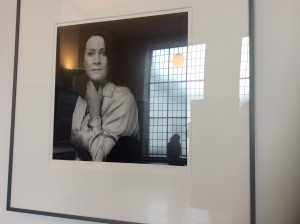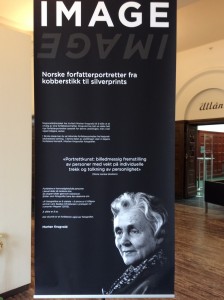It is always a pleasure to meet and collaborate with colleagues who belong to the history of Travelling TexTs, i. e. to the networks formed thanks to the NEWW network and to the COST Action Women Writers in History, from which the TTT team has originated. This time, such a meeting was possible thanks to the fact that Anne Birgitte Rønning from the University of Oslo, a member of the COBWWWEB project, and Jenny Bergenmar from the University of Gothenburg, involved in the Swedish Women Writers on Export Project (http://lir.gu.se/english/research/swedish-women-writers-on-export), acted both as members of the Local Organizing Committee of the first conference on Digital Humanities in the Nordic Countries on March 15 – March 17 2016 (http://dig-hum-nord.eu/?page_id=352&lang=en). The purpose of the conference was to strengthen research, education and communication in the field of Digital Humanities, and make Nordic Digital Humanities more visible internationally – and, indeed, the organizers (Digital Humanities in the Nordic Countries, Oslo Digital Humanities Research Network, Norwegian National Library and Digital Humanities Center at Gothenburg University) fully achieved this goal and rendered the event truly memorable.
The conference attracted many participants, mostly, though not only, from the Nordic countries, so that papers had to be presented in parallel sessions. And the fact that in this way, one missed so many interesting papers was the only drawback of the conference, which was a most inspiring event for a project like ours. In conference key-notes and panel speeches, we heard about semantic web as an interlinking environment for knowledge dissemination in the cultural heritage domain (Francesca Tomasi from the University of Bologna) and got librarians’ point of view in a lecture on documenting folk life in the digital age (Nicole Saylor, Library of Congress) as well as about the huge impact of digitization on libraries and archives, which Hege Stensrud Høsøien from the Norwegian National Library (who was, during the COST Action, also involved in network activities) compared to the introduction of printing.
The nature of Digital Humanities, the very notion and the field itself was under a constant scrutiny in a´many papers including the key-notes, especially in that by Patrik Svensson (from the famous Humlab of the Umeå University), called “Can there be a Nordic digital humanities”? The meta-level of the discipline was pondered over also by the speakers of the closing panel, who were given the question “Paradigm shift? How are digital humanities changing the humanities?” Jenny Bergenmar gave everybody food for thought when she was considering how literary history is written within Digital Humanities from the point of view of literatures in “smaller languages”, how power structures are reproduced at present – issues directly relevant also for the Travelling TexTs. Both Svensson and Bergenmar tackled also the topical issue of the need of a more intersectional approach within DH.
It was a pleasure to present our project at this forum. From the point of view of Travelling TexTs, very inspiring were all papers dealing with databases, visualisations, maps, cartographies – and, of course, women writers and actors in the literary field. Sara Culeddu from the University of Florence & Istituto Italiano di Studi Germanici in Rome presented her database of the translations of Scandinavian writers into Italian in her paper “Digital Maps of Scandinavian Literature in Italy (http://lit.it/)”. Within the project “Swedish Women Online (SWO) from the Middle Ages to the Present”, the project team (Maria Sjöberg, Lisbeth Larsson and Lars Borin) intends to create an on-line lexicon of remarkable Swedish Women. Of major importance vis à vis our project were also papers dealing with the (digitized) press: be it the technical aspects like Kimmo Kettunen’s and Tuula Pääkkönen’s paper “Assessing lexical quality of a digitized historical Finnish newspaper collection with modern language technology”, or papers offering specific analyses like Anne-Birgitte Rønning’s contribution about distant reading as a contextualizing strategy, using the case of Dagny Juel Przybyszewska in the Norwegian political and literary magazine Samtiden.
After having cooperated with our associated partners, Chawton House Library and Turku City Library, as well as with Glasgow Women’s Library and the KB/ National Library of the Netherlands in The Hague, it was great to spend the last conference day in the beautiful building of the Norwegian National Library, which was just hosting two exhibitions of portraits of authors, including many women writers: from Dorothe Engelbretsdatter and Magdalene Buchholm to Amalia Skram and Linn Ullman – Norwegian women writers in history!

